Ultimate resource for Azure AI Engineer Associate preparation AI 102
- August 18, 2025
- Posted by: Sidharth Macherla
- Category: Blog

Summary:
Preparing for Microsoft Certified Azure Engineer Associate is time consuming. Multiple services, variable computational complexities and different methods of deployments makes it easy to get lost in the course content. Having an exam focussed strategy helps in consuming course content in a structured way. This article is an ultimate guide that helps you prepare for the AI 102 exam.
Approach to exam preparation
The key objective of this article is to get you certified. In order to accomplish that objective, we must set out a strategy such that you will take no longer than 40 hours spread across 5 weeks of preparation. The rest of this blog is structured as follows
1. First, we will various types of questions that you will encounter in the exam.
2. Next, we will use the official self-paced study with the above question types in mind for the first time.
3. We will then attempt the practice exam for the first time and identify areas of improvement to revise further.
4. Once we achieve higher than pass rate in the exams, we will change our focus to the source code related questions.
5. Finally, we will repeat the above steps until will are confident of the pass score.
Step 1: Understanding the different types of questions in AI 102 exam
Understanding the types of questions you’ll face in the AI 102 exam is crucial for effective preparation. Knowing when to memorize, analyze, or rely on intuition can make all the difference. Let’s explore the various question types you’ll encounter and how to tackle them.
These questions focus on identifying and understanding key concepts. For instance, you might be asked to determine the type of project needed for a chat application using Gen.AI. Sometimes, these questions are presented as drag-and-drop tasks, requiring you to match concepts with their definitions.
Arrangement questions test your ability to sequence steps correctly. For example, you might need to rearrange steps for extracting data from an invoice. Understanding the order of operations, such as setting up a subscription and resource group, is essential.
These questions challenge your understanding of different AI concepts, such as AI vision versus AI custom vision. You’ll need to know when to use each and the nuances that differentiate them.
Often added as an add-on to other questions, optimisation questions require you to consider factors like model complexity and cost. For example, when retraining a vision model, you might need to balance accuracy with cost-effectiveness.
Hot area questions present a visual exhibit, such as a chat application’s front end, and ask you to identify elements or answer related questions. These questions test your practical experience and ability to navigate real-world scenarios.
Case study questions are unique in that once you answer them, you cannot revisit them. They require a comprehensive understanding of the scenario presented and demand decisive responses.
By familiarizing yourself with the above question types, you’ll be better equipped to approach the next step in the exam preparation.
Step 2: Understanding the course structure of Artificial Intelligence Engineer Exam
Before diving into the course content, familiarize yourself with the skills and weightage that Microsoft assigns to them. This understanding will guide you in identifying which areas require more focus based on your background and hands-on experience. For instance, if you’re already proficient in natural language processing, you might choose to allocate less time to that section initially.
Skills and Weightage in AI 102 Exam
The weightage for the various skills in the Azure AI Engineer Associate exam are not uniformly distributed. More about that can be found at the on official link
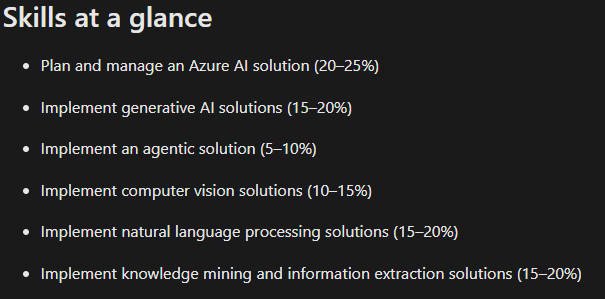
Understanding the course structure
Microsoft structures its courses with a clear learning path, consisting of modules and units. Each unit begins with theoretical content, followed by hands-on exercises and assessments. To optimize your learning, it’s crucial to complete each unit assessment before moving on. This ensures a solid understanding of the material and highlights areas that may need further review.
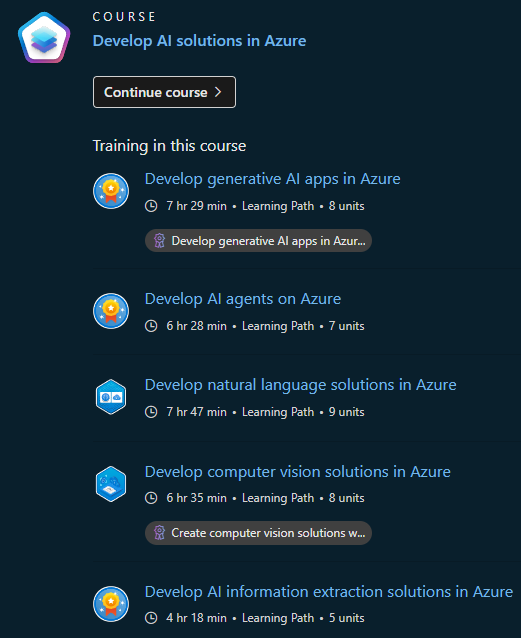
Practice tests and review content
A key component of the strategy is to engage in practice exams and review the results meticulously. By identifying areas with lower scores, you can revisit the content and strengthen your understanding. It’s important to avoid memorizing questions and answers; instead, focus on grasping the underlying concepts and theories.
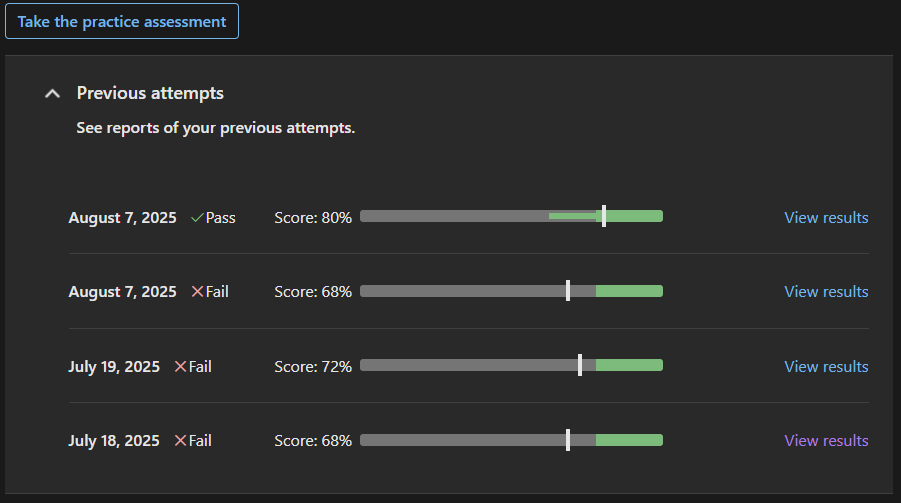
Utilising resources
The practice exams comes with links to additional resources. These resources often include documentation with more detailed source code, which can be invaluable for answering the source code related questions you’ll encounter in the exam. Balancing theoretical knowledge with practical application is essential for success.

Step 3: Approach to studying course content
The Microsoft Certified Azure AI Associate Exam broadly features two types of response types namely, theoretical and source code based. The question types that we discussed in the earlier sections remain the same but the responses or the answers to them differ.
While theoretical response types have concept related options in the answers, the source code responses share a source code in them. The following visual from the first module gives a high level overview of where the conceptual understanding can be found and where you can find the source code related content.
Approach to theoretical content
Start with the introductory units of each module. These sections usually provide high level overviews and set the stage for further learning. There’s no need to memorize every detail and a quick read is sufficient to grasp the basics and definitions. A snippet of what the introduction unit looks like is in the image below.
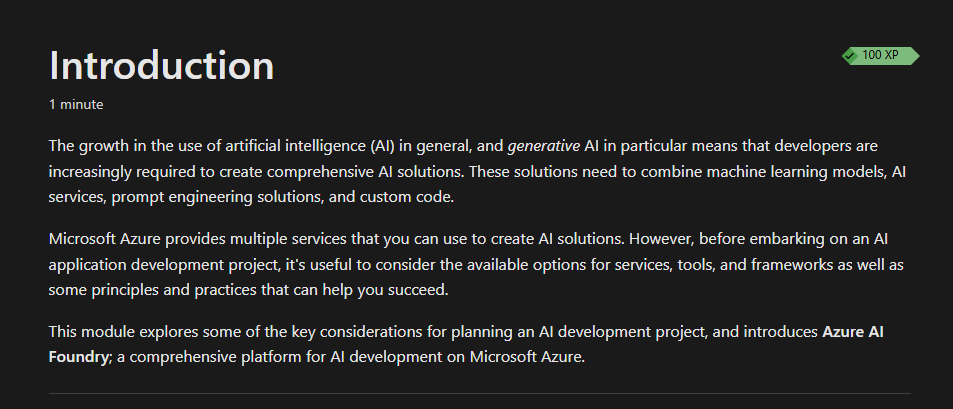
Some units demand more attention. Units that discuss overlapping Azure capabilities—like the differences between AI language services and AI translation or vision services are essential. Focus on the subtle differences and similarities that often surface in comparison type questions.
A snapshot of unit 3 from the module plan and prepare to develop AI solutions on Azure is given below. These type of units need a more deep-dive approach to studying.
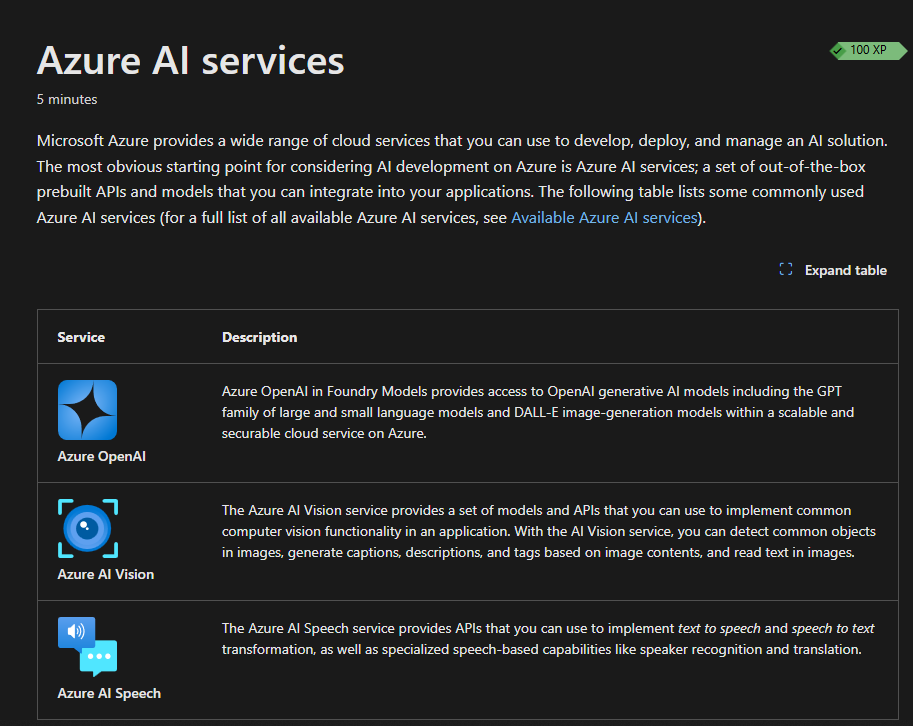
Midway through units, practical exercises emerge. These often combine theory with code and culminate in step-by-step assessment tasks. Expect questions about the order of operations, like creating an Azure resource group or managing keys. Pay attention to elements such as where primary and secondary keys are stored and how resources connect.
These concepts are directly tested in arrangement and “hot area” question formats as explained in the earlier sections. A screenshot of the exercise unit is given below.
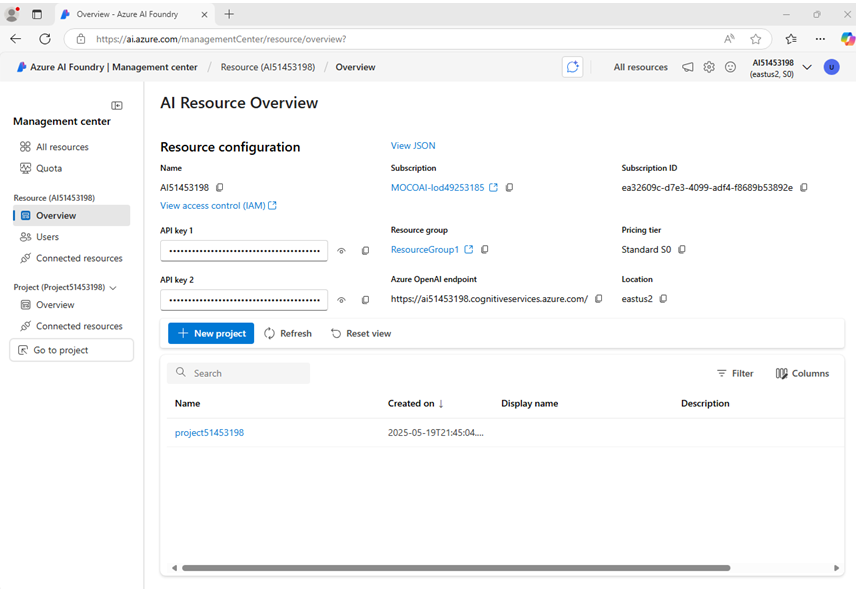
Contact Us for an introductory call to understand how we can help you.
